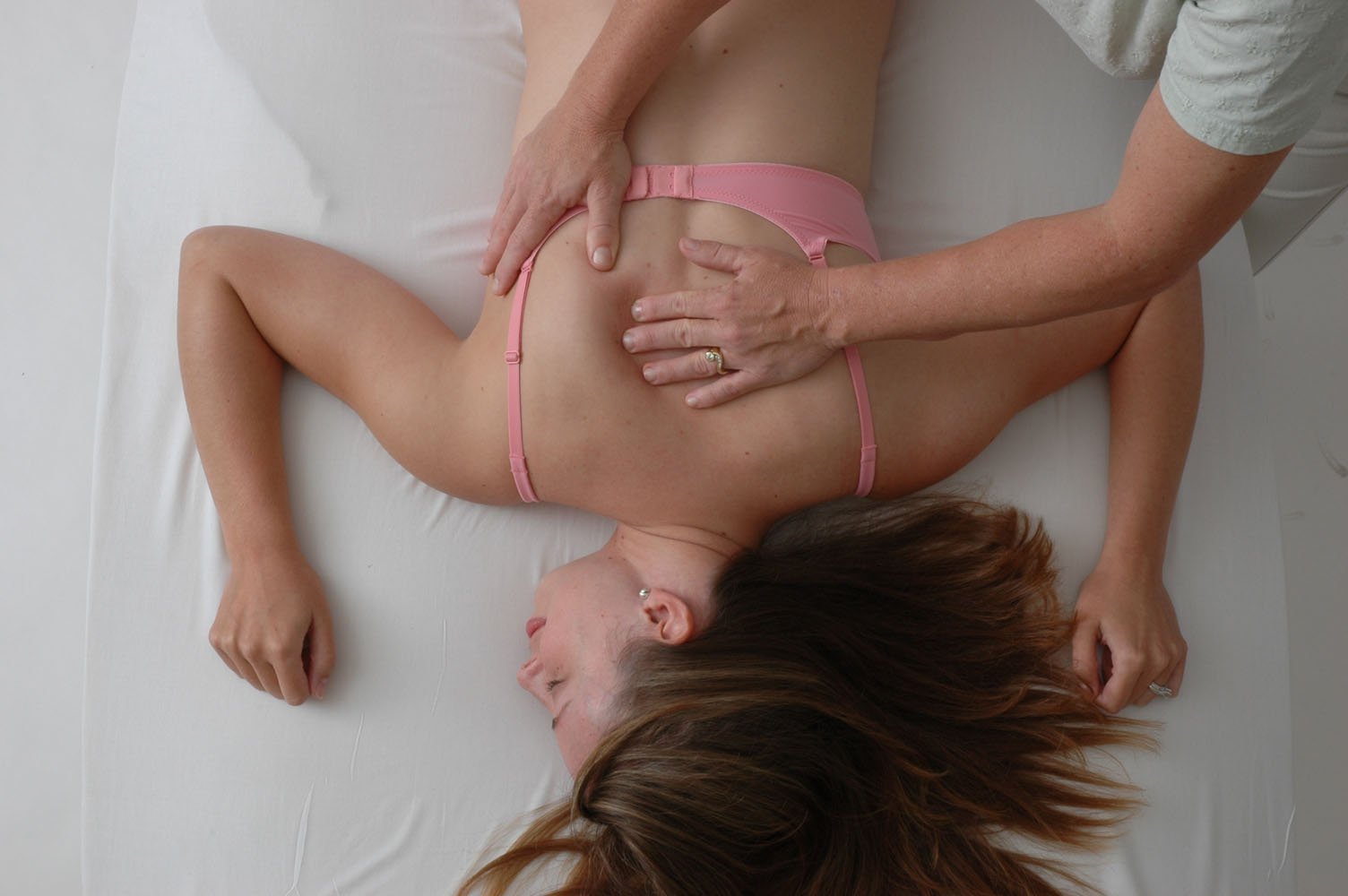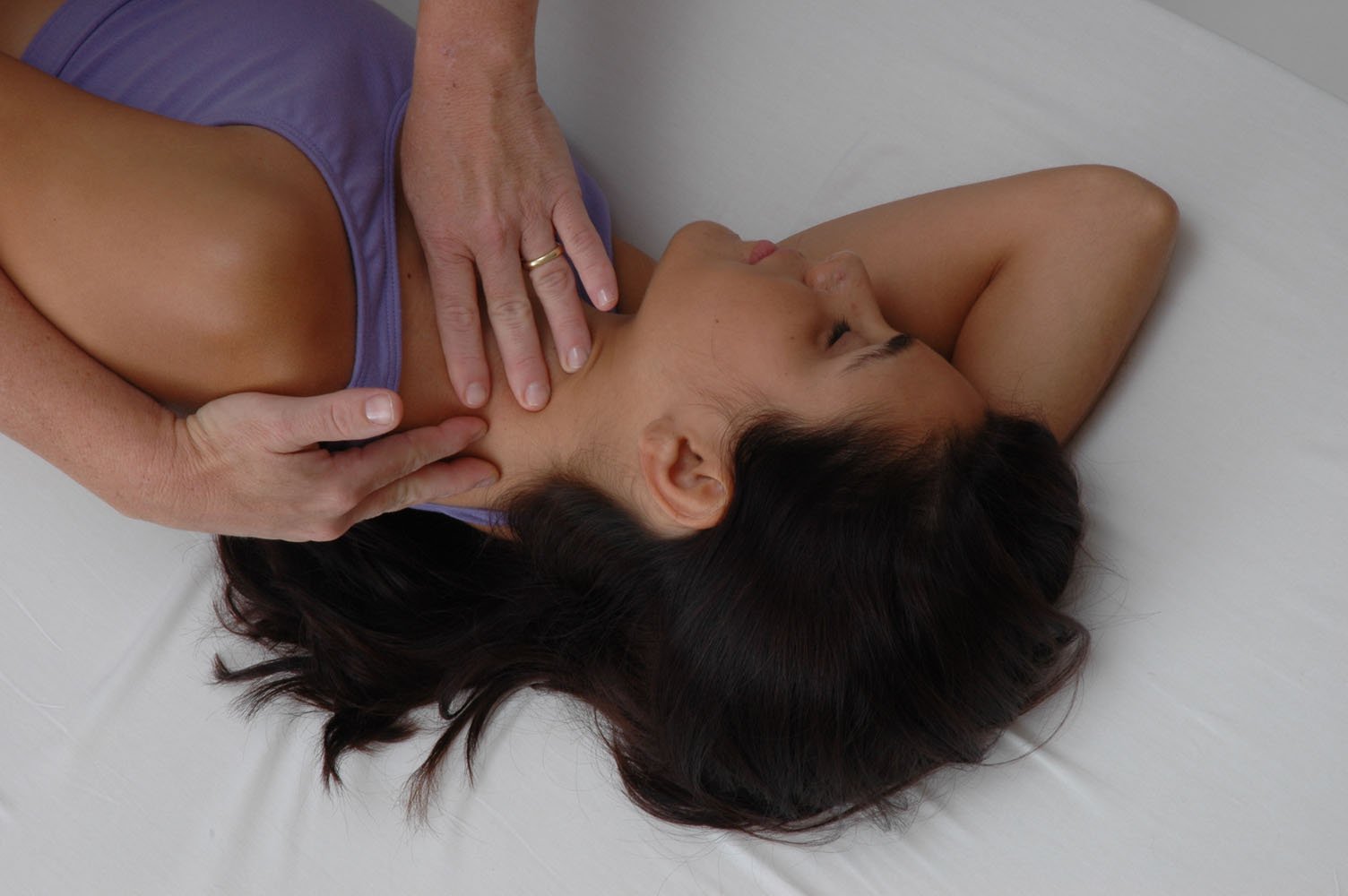Rolfing® Structural Integration
Rolfing® is a holistic system of bodywork designed around a series of sessions using connective tissue manipulation and movement education to organize the body around its central vertical axis (and, therefore, improving its relationship with gravity). This system yields many positive results: better posture, the resolution of various body aches and pains, and a positive impact on one’s emotional and psychological well-being. Rolfers lengthen, align, and balance the body by releasing chronic shortenings and holding patterns in the body due to the physical and emotional stress of trauma and everyday living. When the body is misaligned, gravity is experienced in our bodies as tension as the system tries to maintain uprightness. Once aligned, gravity supports our structure by simultaneously grounding and lifting us. The results are a more energetic, flexible, youthful, and pain-free body. Rolfing Movement® enhances the hands-on work by enlisting our perceptual sense to coordinate our natural orientation to ground and space. Talking to our “movement brain” (which runs under our conscious awareness) helps us to repattern our inefficient habits, and gets us moving more freely.
Research has demonstrated that Rolfing results in more efficient muscle use, allows the body to conserve energy, and creates more economical and refined patterns of movement. Rolfing has been shown to significantly reduce chronic stress, reduce spinal curvature in subjects with lordosis, and enhance neurological functioning. (For more information about Rolfing research, please visit rolf.org and navigate to “Research” under the “Members” pull-down menu.)
Benefits:
Greater ease of movement, which increases energy
Improved flexibility, balance, and alignment
Increased body awareness and recognition of different choices of movement
More resilience in the body, which is less prone to injury
Relief from chronic pain
Increased breathing capacity
Increased capacity to deal with stress
Better blood flow and circulation
The release and elimination of toxins
Psychological and emotional evolution and growth
People of all ages seek out Rolfing for various reasons: limited mobility, chronic pain issues such as TMJD, headaches, whiplash, tendonitis, carpal tunnel syndrome, rotator cuff injury, lower back pain, scoliosis, knee problems, plantar fasciitis, and many other challenges resulting from injury. Some look for improved athletic or artistic performance. Others want better posture and the ease that comes when the body is brought into better alignment with gravity.
What Rolfing Isn’t
While Rolfing is often grouped with massage and other hands-on forms of bodywork, there are fundamental differences between Rolfing and other modalities. Rolfing works to address the structural order of the body, and not just the symptoms resulting from the body’s misalignment. Often, the pain and faulty mechanics we think are the main area of concern are in fact a response to a primary problem somewhere else. Rolfers address the areas of pain, yet also have the ability to look more globally to see where seemingly distant misalignments are primary drivers creating the postural problems and symptoms in the system. With slow, deep pressure and gentle movements from the client, the pliable quality of fascia is contacted. This allows a Roller to release and realign the entire body, unwinding the primary adhesions and their compensations. The results are not only the resolution of symptomatic pain, but improved skeletal alignment and support that allows easier standing, sitting, and action.
Who was Ida P. Rolf?
Rolfing® Structural Integration was developed by Ida P. Rolf, Ph.D. In 1920, she earned her Ph.D. in biochemistry from Columbia University and subsequently worked at the Rockefeller Institute where she studied the flexibility of proteins in connective tissue. Her extensive search for solutions to her and her family members’ health problems also led her to examine many systems that study the effect of structure on function, including yoga, osteopathy, chiropractics, and the burgeoning Human Potential Movement. Dr. Rolf combined her research with scientific knowledge and developed Rolfing over a 30 year period. She is known for the discovery of the importance of fascia, which she called “the organ of form”. She understood that fascia relates everything together in the body, and that it possesses a quality of plasticity that allows it to be shaped. She also shined the light on gravity as a force that humans unconsciously negotiate with to stay upright on the earth.
What is Fascia?
The burgeoning field of fascial research in the last decade has deeply expanded our understanding of the fascial system, and its importance. “The fascial system consists of the 3-dimensional continuum of soft, collagen-containing loose and dense fibrous connective tissues that permeate the body… (It) surrounds, interweaves between, and interpenetrates all organs, muscles, bones, and nerve fibers, endowing the body with a functional structure, and providing an environment that enables all body systems to operate in an integrated manner (The Fascia Research Society and Fascia Nomenclature Society, 2018). Research is guiding us to an understanding of why Rolfing can help organized this important communication system. For example, the fascial system is full of different mechanoreceptors, including Ruffini organs and interstitial receptors. Stimulation of both these receptors can trigger profound changes in the autonomic nervous system. Manual stimulation of the sensory endings by a practitioner (also, with movement initiated by the client) can lead to a change in the tone of the tissue being addressed.
The Ten Series
Rolfing treatment is based on what we call The Basic Ten Series. This consists of ten distinct sessions. Each session is unique, and at the same time is part of a greater whole. Each level builds on the work of the previous ones, or more accurately, releases progressively deeper and deeper structures and patterns as those areas become available for the work (as the more superficial armoring and tension release). After the initial Basic Ten Series, clients often come back for advanced work and “tune ups” to support the changes that happened in the Ten Series, and to address new patterns, traumas, and stresses that arise.
Sessions 1-3:
Called the "sleeve” sessions, sessions 1-3 strive to loosen and balance surface layers of connective tissue.
Specifically, the first session is devoted to enhancing the quality of breath with work on the arms, ribcage and diaphragm. Opening is also started along the upper leg, hamstrings, neck and spine.
The second session helps give the body a stable foundation by balancing the foot and muscles of the lower leg.
The third session typically involves a “side view” for an understanding of how the head, shoulder girdle, and hips are positionaly related to one another when standing under the influence of gravity. Then, the body is addressed within the context of this new vision.
Sessions 4-7:
Sessions 4-7 are referred to as “core” sessions and examine terrain found between the bottom of the pelvis and top of the head. The idea of core also includes the deep tissue of the legs for its role in support.
Session four begins this journey, its territory extends from the inside arch of the foot and up the leg, to the bottom of the pelvis.
The fifth session is concerned with balancing surface and deep abdominal muscles to the curve of the back.
Session six seeks to enlist more support and moment from the legs, pelvis and lower back, while the seventh session turns its sole attention to the neck and head.
Session 8-10:
“Integration” is emphasized throughout the remaining three sessions, as sessions 8-10 provide an opportunity for the practitioner to blend previously established advancements, and ones yet to be made, into the body in a way that encourages smooth movement and natural coordination.
During sessions eight and nine, the practitioner determines how best to achieve this integration, as the protocol is unique for each individual.
The tenth and final session is also one of integration, but more importantly, serves to inspire a sense of order and balance. Once completed, the wisdom of the Rolfing Ten Series will drive and support the body with health for years to come.
(This description comes from the Dr. Ida Rolf Institute® website at www.rolf.org)



